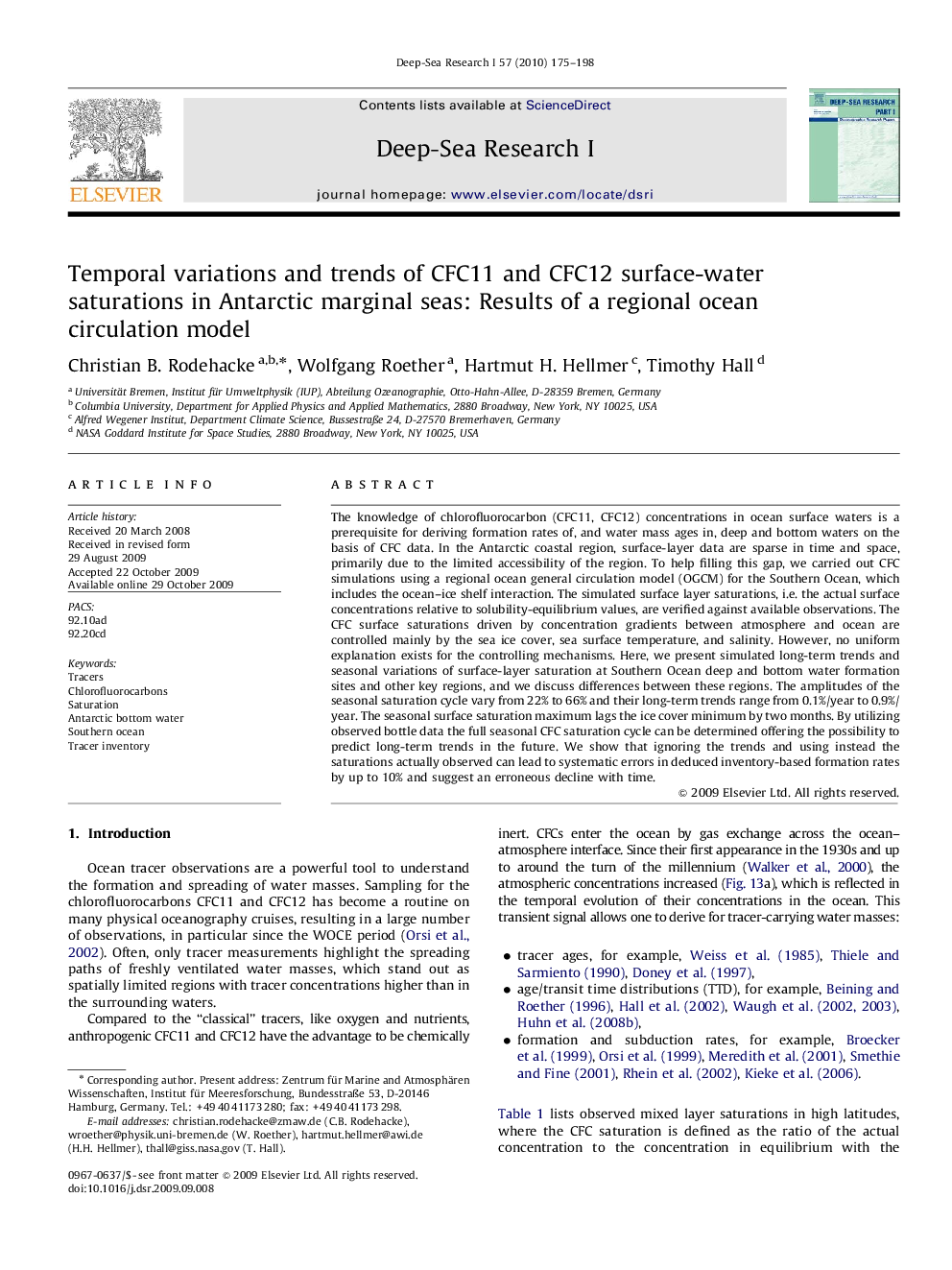| Article ID | Journal | Published Year | Pages | File Type |
|---|---|---|---|---|
| 4534895 | Deep Sea Research Part I: Oceanographic Research Papers | 2010 | 24 Pages |
The knowledge of chlorofluorocarbon (CFC11, CFC12) concentrations in ocean surface waters is a prerequisite for deriving formation rates of, and water mass ages in, deep and bottom waters on the basis of CFC data. In the Antarctic coastal region, surface-layer data are sparse in time and space, primarily due to the limited accessibility of the region. To help filling this gap, we carried out CFC simulations using a regional ocean general circulation model (OGCM) for the Southern Ocean, which includes the ocean–ice shelf interaction. The simulated surface layer saturations, i.e. the actual surface concentrations relative to solubility-equilibrium values, are verified against available observations. The CFC surface saturations driven by concentration gradients between atmosphere and ocean are controlled mainly by the sea ice cover, sea surface temperature, and salinity. However, no uniform explanation exists for the controlling mechanisms. Here, we present simulated long-term trends and seasonal variations of surface-layer saturation at Southern Ocean deep and bottom water formation sites and other key regions, and we discuss differences between these regions. The amplitudes of the seasonal saturation cycle vary from 22% to 66% and their long-term trends range from 0.1%/year to 0.9%/year. The seasonal surface saturation maximum lags the ice cover minimum by two months. By utilizing observed bottle data the full seasonal CFC saturation cycle can be determined offering the possibility to predict long-term trends in the future. We show that ignoring the trends and using instead the saturations actually observed can lead to systematic errors in deduced inventory-based formation rates by up to 10% and suggest an erroneous decline with time.
